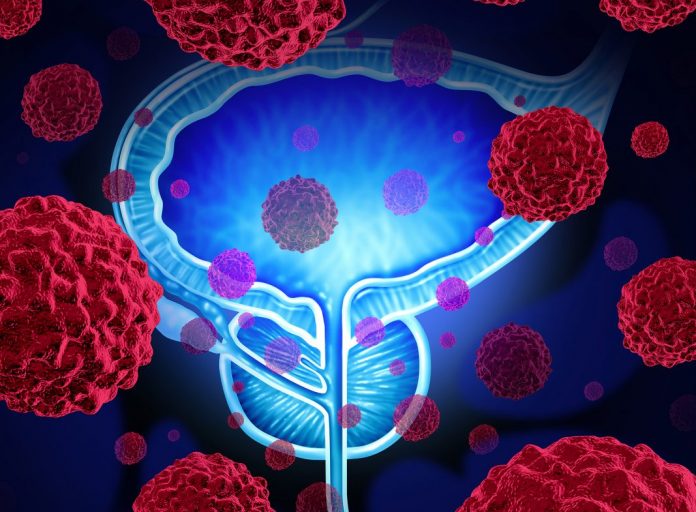
One of the common indicators of prostate cancer recurrence is an elevated level of prostate-specific antigen (PSA). When PSA levels begin to rise after treatment, it signals that the cancer may be returning, leading to what is known as biochemically recurrent (BCR) prostate cancer.
In recent years, the focus has shifted toward finding more precise and effective treatment options for BCR prostate cancer. Among these is olaparib, a poly(adenosine diphosphate–ribose) polymerase (PARP) inhibitor that is only approved for advanced prostate cancer—prostate cancer that is metastatic and has progressed despite being on androgen deprivation therapy (ADT), or metastatic castration-resistant prostate cancer.
However, its effectiveness as a standalone treatment, particularly without the use of androgen deprivation therapy has been relatively unexplored—until now.
“In this study, we wanted to evaluate olaparib in men without metastases and before they developed castration resistance,” said study lead author Cathy Handy Marshall, MD, MPH of Johns Hopkins.
The study: Investigating olaparib without hormone therapy
In their Phase II study published in JAMA Oncology, the team evaluated the effectiveness of olaparib monotherapy in patients with high-risk BCR prostate cancer who had not undergone ADT. The study enrolled 51 genetically unselected patients, all of whom had undergone radical prostatectomy. The patients included in the study had a PSA doubling time of six months or less, an absolute PSA value of at least 1.0 ng/mL, and a testosterone level of 150 ng/dL or higher.
Patients were administered 300 mg of olaparib orally twice daily without ADT until their baseline PSA levels doubled, they exhibited clinical or radiographic progression, or they experienced unacceptable toxic effects. The primary outcome measured was a confirmed 50% or higher decline in PSA from baseline, referred to as PSA50. Additionally, the study analyzed secondary outcomes based on the presence of homologous recombination repair (HRR) alterations, a genetic factor that could influence the response to olaparib.
The role of HRR alterations
The study’s results were promising, particularly for patients with HRR alterations, specifically those with BRCA2 mutations.
“There are certain gene mutations of the tumor that make some cancers more likely to respond,” Marshall explained. “We only saw tumor response among patients with gene mutations that we now know are more likely to be sensitive to olaparib treatment, but not in patients without such mutations. What was most impressive is that all the patients with BRCA2 mutations had evidence of response to treatment (measured by a decline in PSA).”
Among the 51 patients enrolled, 13 (26%) exhibited a PSA50 response, indicating a significant reduction in PSA levels. Notably, all 13 patients who responded to the treatment were part of the HRR-positive group, which constituted 27 participants. Among those, all 11 patients with BRCA2 mutations experienced a PSA50 response, suggesting that olaparib is particularly effective for this subgroup. The median duration of response was 25 months. The other two PSA responses were seen in participants with a CHEK2 mutation and an ATM mutation.
The study’s findings underscore the potential of olaparib as a monotherapy in treating certain patients with BCR prostate cancer, particularly those with HRR alterations like BRCA2. However, it is important to note that no PSA responses were observed among the 24 men in the HRR-negative group. Further, the median time to the next anticancer therapy was 22.7 months for those with HRR alterations compared with only 2.4 months in those without, leading researchers to conclude that olaparib may not be effective for all patients with BCR prostate cancer.
“We have done a number of trials looking for therapies for prostate cancer that are not hormone-suppressing to avoid those side effects,” Marshall explained. “This study is a breakthrough because it is the first trial to show that a non-hormonal drug can induce durable complete remissions in recurrent prostate cancer patients with BRCA2 mutations—one of the most aggressive subtypes of this disease.”
While the study shows potential for patients who wish to avoid hormone therapy due to its side effects, Marshall cautions that the findings are not yet sufficient to broadly change clinical practice or be adopted by national guidelines yet.
The study has opened the door for further research into the role of olaparib in treating BCR prostate cancer, particularly in patients with HRR alterations. Marshall suggests that future studies could focus on comparing PARP inhibitors like olaparib with traditional hormone therapies, and larger studies in the subset of patients likely to respond to confirm what the team observed in this study.
“An alternative approach would be to conduct a randomized trial in patients without metastases using androgen deprivation therapy with androgen receptor pathway inhibitors (like abiraterone), with or without olaparib, in patients with mutations that would likely be associated with a response,” added Marshall.





